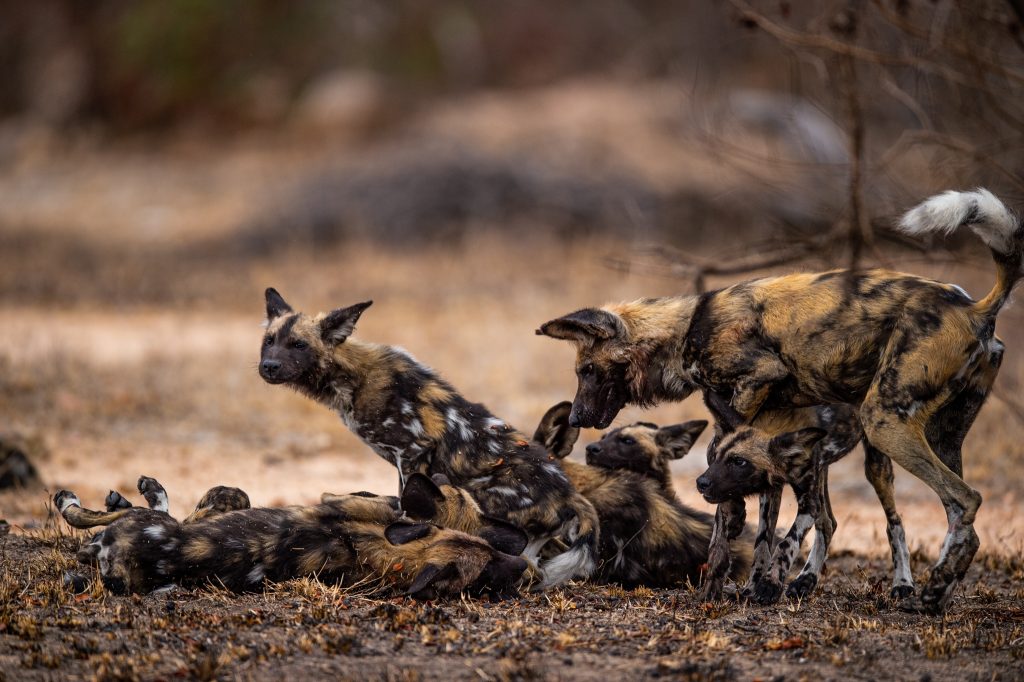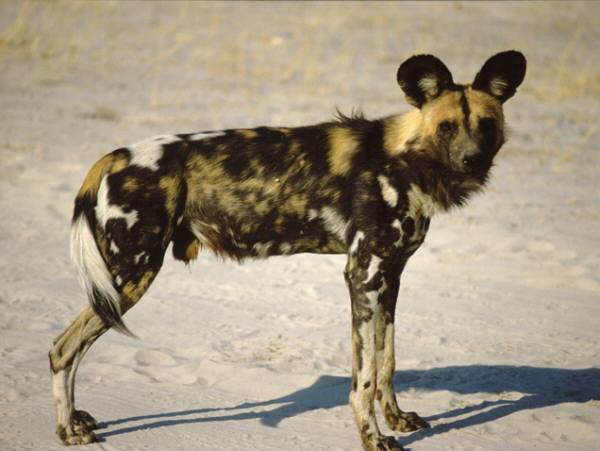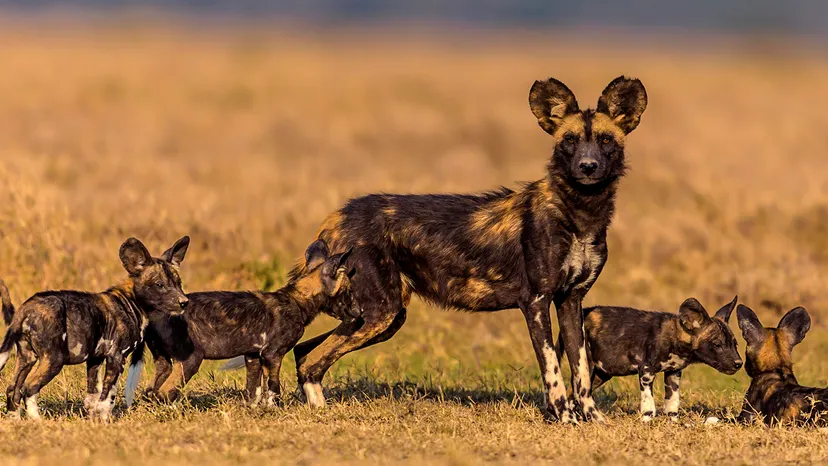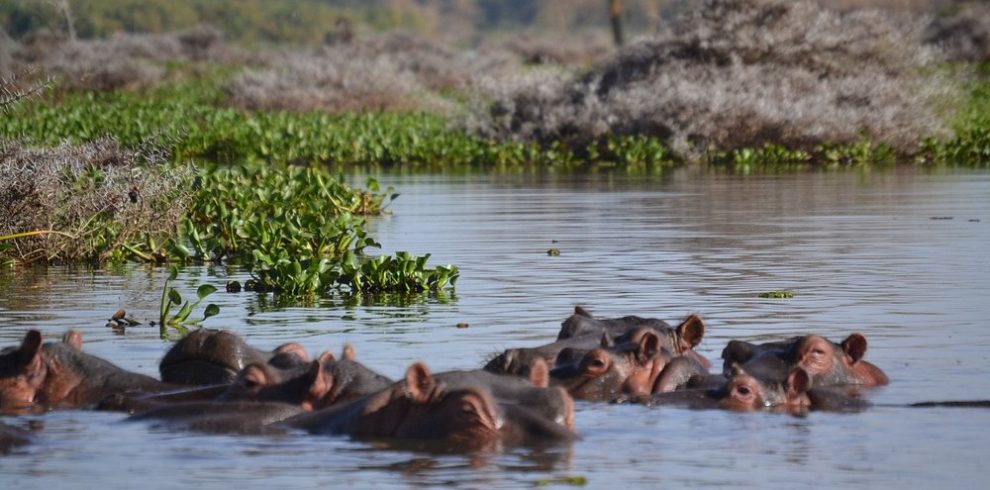1. Social Structure and Pack Dynamics

One of the most notable facts about the African wild dog is their highly social structure. Unlike many other wild animals that live solitary lives or in loose family groups, African wild dogs live in cohesive packs that function as tight-knit communities. The number of individuals in these packs is usually 2-20 but can be more or less depending on various conditions such as habitat and food supply.
The pack structure is hierarchical, and the highest is a dominant breeding pair. Breeding is usually restricted to these two individuals in the pack, but exceptions exist. The alpha male and alpha female have the greatest degree of respect among the pack members and their leadership is what determines the pack activities like hunting and defense.
What is especially fascinating about African wild dogs is the high level of cooperation within the pack. Each member plays its part in keeping the group alive, and this consists of hunting and protection, and fulfilling the needs of the pups. The group collaborates in hunting, rearing young, and protecting enemies. When successful in a hunt, the prey is divided among the dogs, the members of the pack eating in a single meal, regardless of their position in the hierarchy.
2. Incredibly Efficient Hunters

African wild dogs are renowned for their exceptional hunting abilities. Unlike other carnivores like lions or leopards that rely on stealth or strength to capture prey, African wild dogs rely on teamwork, speed, and stamina. Their hunting technique is very efficient and it is one of the most coordinated ones among animals.
One of the most intriguing facts about the African wild dog is their ability to run at incredible speeds for long distances. They are capable of reaching speeds of 44 miles per hour (70 kilometers per hour) when in pursuit and can run a number of kilometers without fatigue. This renders them exceedingly proficient in the pursuit of prey, particularly in the case of such animals as antelope, wildebeest and impalas.
African wild dogs do not typically ambush their prey. They rather pursue it until it is exhausted on the open savanna and use the element of speed to fatigue their prey. This strength makes them successful hunters since they are able to pursue their prey, running long distances until it becomes tired after which they ambush it.
In addition to their physical attributes, African wild dogs use advanced communication techniques during the hunt. This is achieved by simple sets of vocalizations, body language and even use of scents to coordinate whose doing what so that each person within the pack is aware of their place. The helpfulness of this collaboration hunting method is that the pack can attack and defeat prey that was much bigger than any of the dogs could normally attempt on their own.
3. Vocal Communication and Unique Sounds

One of the most remarkable facts about the African wild dog is their complex vocal communication system. While many animals communicate using basic sounds like growls, barks, and roars, African wild dogs have a more sophisticated range of vocalizations that help them maintain pack cohesion and communicate over long distances.
The range of sounds made by the wild dogs has a variety of purposes. Among their most recognizable calls and sounds is one that sounds like a high-pitched twitter or a chirp, a call regularly used to coordinate actions during a hunt. These chirps are not exclusively applied in order to maintain the pack together, but also to prompt a more coordinated prey chase. The call assists in transmitting excitement, urgency and even desperation, so that the whole pack is able to act according to the demands of the hunt.
African wild dogs also produce a variety of other sounds, including a soft whining noise used for greeting and bonding, and a growling or barking sound used when defending territory or signaling aggression. These vocalizations play an important role in enforcing social affiliation in the pack, as well as in the coordination of hunting activities.
What is most interesting about the vocal communication of the wild dog is that it does not concern only some sounds. The dogs additionally communicate through body language and scent marking. Such signs may be a wag of the tail or a specific posture meaning submission or aggression. Scents can also act as a form of communication or help the dogs indicate their presence by placing scent markings on trees, bushes, or even the ground.
4. Striking Coat Patterns

Another of the most eye-catching facts about the African wild dog is their beautifully unique coat patterns. No two African wild dogs have the same coat, making each individual look distinct from others in the pack. The coat itself is pieced together of reddish-brown hemisphere, black and white fur, which usually makes the dog appear to be painted-hence the nom de guerre of the painted dog.
There are a number of functions other than aesthetics that the coat finds. Wild dogs possess different fur designs that allow them to camouflage in the environment, especially where grasslands and shrublands are present. The mixture of colors gives them a camouflage, which assists them to sneak up on their prey undetected. It also balances their body temperature, as they have fairly thin coats, and this helps during a physical pursuit, such as during chase. Although their unusual look is mesmerizing, these patterns have a significant social value. Wild dogs can identify members of a pack based on coat pattern, thus each animal is easily identified. This is very effective in cases where the pack is huge or in cases where they have spread to vast regions of lands. The patterns on the coats also play an important role in the survival of pups, they camouflage invisible therefore evading predation until they have reached such an age that they can participate in the hunting activities in the pack.
5. Conservation Status and Challenges

Despite their remarkable qualities, African wild dogs are listed as an endangered species, and their numbers have been declining rapidly over the past century. One of the most concerning facts about the African wild dog is that they face numerous challenges that threaten their survival. The health of the species has also been affected by loss of habitat, human-wildlife conflict, disease and many other problems.
The African wild dog’s territory is often fragmented due to human activities such as agriculture, urbanization, and infrastructure development. Due to the shrinking of their natural habitats, the dogs are restricted to smaller, closed land pockets, making it more difficult to discover food and mattachs. The fact is wild dogs in regions are compelled to interact with livestock creating conflict with farmers and the surrounding people. This usually translates to killing of the wild dogs since they are considered to be a danger to livestock.
Moreover, the wild dogs become susceptible to diseases; there is rabies, distemper, which they may contract by interaction with the domestic animals or through other wildlife. These diseases may prove disastrous to the wild dog population killing entire packs in other cases. The few numbers and genetic background also put them in a disadvantaged position due to an adverse impact of disease, a fact that further complicates their endangered conditions.
Conservation efforts are underway to protect African wild dogs, and several organizations are working to mitigate the threats they face. This involves the creation of protective zones, development of wildlife corridors that interface with the fragmented habitats as well as the training of the local communities on the significance of the wild dogs to the ecosystem. Anti-poaching activities have helped save the conflict of man and animals and the coexistence of human and wild dogs in some regions.
Conclusion
The African wild dog is one of the most fascinating and misunderstood animals in Africa. From their complex social structure and unique hunting strategies to their striking appearance and advanced communication skills, there are countless facts about the African wild dog that make them a truly remarkable species. Regrettably, several threats to survival of these marvelous creatures are also on the rise, and it becomes such a strong impetus to make more people aware of these issues and become involved in the process of conservation.
By understanding the unique traits of the African wild dog, we can help ensure that future generations will have the opportunity to witness these extraordinary animals in the wild. Whether you’re an animal enthusiast, a conservationist, or simply someone interested in learning more about Africa’s wildlife, the African wild dog is a species that truly deserves our attention and protection.






